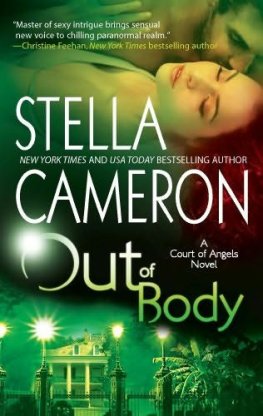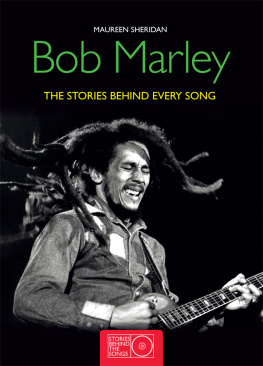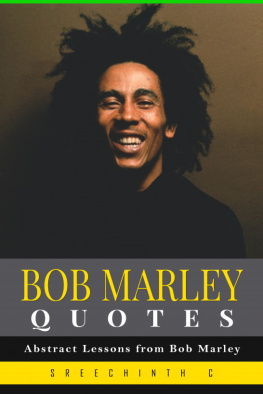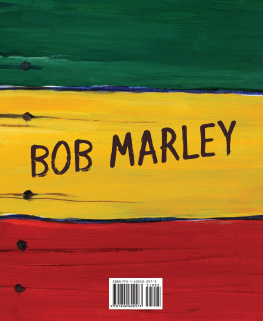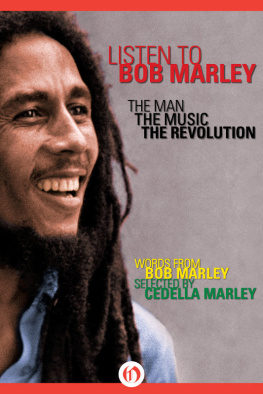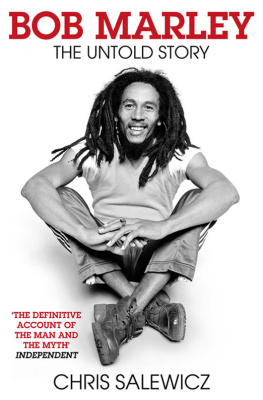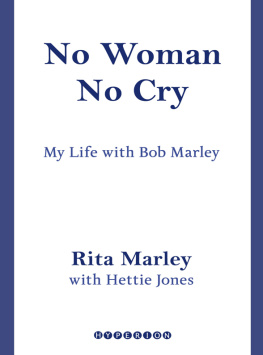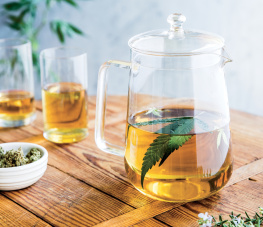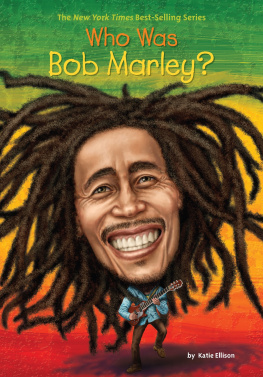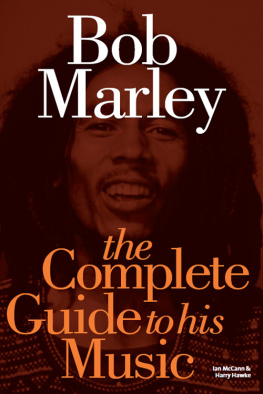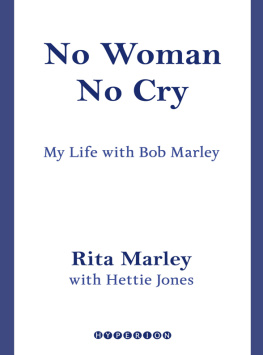Don Taylor - Marley And Me: The Real Bob Marley Story
Here you can read online Don Taylor - Marley And Me: The Real Bob Marley Story full text of the book (entire story) in english for free. Download pdf and epub, get meaning, cover and reviews about this ebook. year: 1995, publisher: Barricade Books, genre: Non-fiction. Description of the work, (preface) as well as reviews are available. Best literature library LitArk.com created for fans of good reading and offers a wide selection of genres:
Romance novel
Science fiction
Adventure
Detective
Science
History
Home and family
Prose
Art
Politics
Computer
Non-fiction
Religion
Business
Children
Humor
Choose a favorite category and find really read worthwhile books. Enjoy immersion in the world of imagination, feel the emotions of the characters or learn something new for yourself, make an fascinating discovery.

- Book:Marley And Me: The Real Bob Marley Story
- Author:
- Publisher:Barricade Books
- Genre:
- Year:1995
- Rating:5 / 5
- Favourites:Add to favourites
- Your mark:
- 100
- 1
- 2
- 3
- 4
- 5
Marley And Me: The Real Bob Marley Story: summary, description and annotation
We offer to read an annotation, description, summary or preface (depends on what the author of the book "Marley And Me: The Real Bob Marley Story" wrote himself). If you haven't found the necessary information about the book — write in the comments, we will try to find it.
Marley And Me: The Real Bob Marley Story — read online for free the complete book (whole text) full work
Below is the text of the book, divided by pages. System saving the place of the last page read, allows you to conveniently read the book "Marley And Me: The Real Bob Marley Story" online for free, without having to search again every time where you left off. Put a bookmark, and you can go to the page where you finished reading at any time.
Font size:
Interval:
Bookmark:
I could never have achieved the successes I have had were it not for the following people, beginning with my early years as a promoter and on through the present.
To the following I acknowledge my sincere appreciation: Stephen Hill, Sr.; the R & B family of 1958 to 1968; Ben E. King; Jerry Butler; Chuck Jackson;, the late Jackie Wilson; the Shirellesespecially Shirley Owens; Walter Godfrey; the Drifters; the late Tammi Montgomery Terrell; Betty Everett; Little Anthony and the Imperialsespecially Anthony Gourdine; that great contributor Henry Wynn, who was the guiding light at sweet Auburn Avenue; Bobby Schiffman, owner of the Apollo; and Murray the K, fifth Beatle, who was responsible for so many shows at the Brooklyn Fox; to Patti La Belle and the Blue Belles; Dick Griffey; Kendal Minter; Vivian Scott; Danny Sims; Janet Davidson and Jackie Davidson; and in later years, the Top Line crew of Marcia Davis, Bagga Davis, and my close confidante, Danny Marks. Thanks to all the Wise Guys that I have met and worked with in the world, for being standup people. I would also say thanks to Mrs. Irwin Marsh, Nari and Hotu Chatani, Nicky Nicholas, Tom Tavares-Finson, and my other mother, Aunt Daisy Belizario.
In the life of my association with Bob, special thanks to all those who played a part in his success and indeed, by extension, my own success. In this category I place Chris Blackwell, Rita Marley, Cedella Booker, Judy Mowatt, Marcia Griffiths, the Wailers band, Family Man Barrett, Carlton Barrett, Tyrone Downie, Alvin Seco Patterson, AJ Anderson, Junior Marvin, Alex Sadkin (deceased), King Sporty, Captain Curry, and of course, Bobs children. I will be forever grateful to Bunny Livingston and Peter Tosh who together with Bob formed the original Wailers; without them I would have no story to tell today. Thanks also to Frankie Crocker of WBLS, New York, and all DJs and program directors, and all the Island Record licensees around the world, who played their part in building Bobs career. I am also immensely grateful to April Taylor, my former wife, who did so much for Bob while he stayed with us in Miami.
With respect to the book itself, I must pay special thanks to coauthor Mike Henry and to Camille Hines-Henry for bringing Mike and me together to make this book a reality. Many thanks also to Dawn Chambers who transcribed the tapes as I recorded them, spending endless hours typing and retyping. To Abe Dabdoub for his legal advice and Dwight and Christine Simons of WRR. Special thanks to Kim Robinson-Walcott for her incisive editorial advice, editor Annie Paul who helped to bring coherence to the manuscript, and to Susan Anderson for her work on the book, as well.
I wish to acknowledge the role played in my research by such publications as Catch a Fire by Timothy White, Boh Marley: Reggae King of the World by Malika Whitney (a former secretary of mine) and Dermot Hussey, Reggae International by Stephen Davis and Peter Simons, In His Own Words (Omnibus Publishers), Reggae Report magazine (owned by Peggy Quattro, also a former secretary of mine), and the Daily Gleaner.
My eternal thanks to the medical fraternity who saved my life. I refer specifically to Dr. William Bacon of Miami, Florida, and Dr. Phillip Thompson of Nassau, Bahamas. And finally, I must thank my wife Sonia, who has shared the birth of this book.
Don Taylor

I n 1494, Christopher Columbus, lost and floundering in his search for Zipangu, discovered Jamaica by drifting unceremoniously ashore somewhere along the coastline of St. Anns Bay, not far from Nine Miles where Bob Marley himself, on February 6, 1945, would later be born. The inhabitants at the time of the admirals arrival were peaceful Arawak Indians, who, many centuries earlier, had themselves discovered the island they called Xaymaca.
Struck by the stunning natural beauty of the land, Columbus extolled Jamaica as the fairest isle his eyes had ever beheld. In a later expedition, he would beach his waterlogged vessels and be marooned among this beauty for a year somewhere along the coastline of St. Ann, before being eventually rescued on June 28, 1504 by Diego De Salcedo.
The Spanish occupation of Jamaica, in historical terms, amounted to no more than a blink(barely over 140 years(but by the time it had ended in 1655 with their ejection by the English, the helpless Arawaks had been driven to extinction. No exact numbers of the perished Arawak population is known, nor for that matter, do we know the proportionate cause of death. Many Indians perished under brutal conditions of forced labor in worthless and unproductive Jamaican gold mines. Thousands more succumbed to new strains of diseases introduced by the interlopers. Scores committed suicide by hanging themselves or drinking poisonous cassava juice.
The influence of the Spaniards on Jamaica was brief but pervasive. Behind them they left quaint Spanish place names such as Oracabessa, Mount Diablo and Ocho Rios; in their first capital city, Spanish Town, they created the impressive Spanish square flanked by the first parliament building and by Kings House, residence of the early governors of Jamaica, from whose steps the abolition of slavery was announced. Today those solid brick building;s, some of the finest examples of Spanish architecture in Jamaica, remain only as fire-ravaged hulks of a vanished Spanish era.
When the Spanish landed in Jamaica, they found its original inhabitants to be a peaceful people who stood in marked contrast to the fierce Caribs of the Eastern Caribbean. The Jamaican Arawaks cultivated maize and sweet potato as their main staples and satisfied their meager needs through hunting and fishing. It is likely that they arrived in Jamaica around 700 a.d. In time the Arawaks would become renowned for introducing the Old World to tobacco, a plant they loved to smoke from their Y-shaped pipes, inhaling with intensity to produce intoxication and unconsciousness, after which, utterly at peace with the world, they would laze in hammocks, a creation they would also bequeath to the New and Old Worlds.
Why people drink is they want the feeling I get when I smoke herb. Everybody need to get high, but some people getting high with the wrong things. (Bob Marley, January 1976)
Realizing that there was no gold in Jamaica(the real object of their voyages of exploration(the Spanish lost interest in Jamaica, and by 1512 many of their colonists had withdrawn ninety miles away to Cuba. In the ensuing years, other than growing banana, plantain, all forms of citrus, and sugar cane, the remaining Spanish did little to improve their Jamaican colony.
By 1655, however, the days of the Spaniards in Jamaica were numbered. Thirty-eight ships under Admiral William Penn, sent by Oliver Cromwell to conquer the island of Hispaniola, having failed in their mission and seeking a consolation prize, attacked Jamaica. The weak and factionalized Spanish settlers offered little resistance to the British invasion and ultimately fled from Seville in St. Ann, a site later renamed Runaway Bay to commemorate this flight.
Some fifteen years after Penns capture of Jamaica, the Treaty of Madrid in 1670, formally ceded Jamaica to England. The island would remain a British colony for nearly three hundred years until being granted independence in 1962.
The British victory over the Spaniards ushered in the notorious era of the buccaneers during which Jamaica became the pirate capital of the world.
From their chosen capital city of Port Royal, strategically situated at the tip of the Palisadoes promontory that juts out of Kingston Harbor, the pirates raided Spanish and Dutch ships passing through the straits of Panama, plundering their goods and treasures for the British Crown. Sir Henry Morgan, the most famous of these hardened buccaneers, ruthlessly sacked the Caribbean Spanish Empire, burning the city of Panama in 1671. For his reward he was made lieutenant governor of Jamaica by Charles II and bequeathed land in the parishes of Clarendon and St. Mary.
Font size:
Interval:
Bookmark:
Similar books «Marley And Me: The Real Bob Marley Story»
Look at similar books to Marley And Me: The Real Bob Marley Story. We have selected literature similar in name and meaning in the hope of providing readers with more options to find new, interesting, not yet read works.
Discussion, reviews of the book Marley And Me: The Real Bob Marley Story and just readers' own opinions. Leave your comments, write what you think about the work, its meaning or the main characters. Specify what exactly you liked and what you didn't like, and why you think so.

